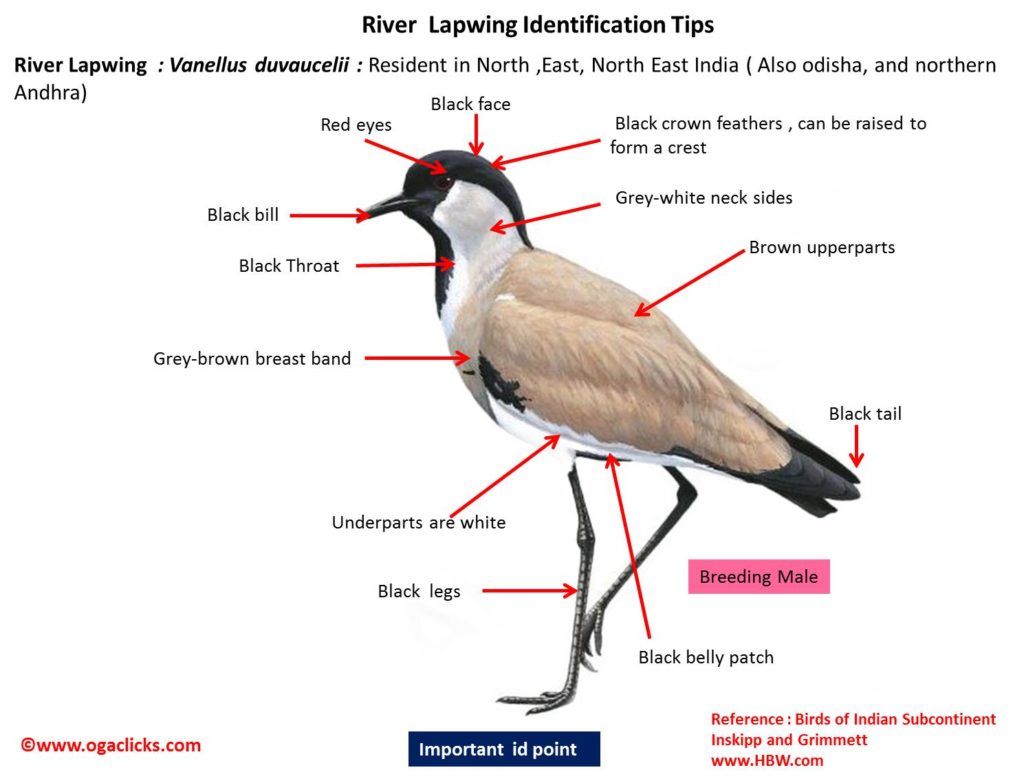
River Lapwing Vanellus duvaucelii
Etymology:
- Vanellus : Latin word for fan like wings derived from vannus –winnowing fan
- Duvaucelii : Named after French naturalist Alfred Duvaucel (1796–1824)
Vernacular names: Hindi: Kharpankhi titeeri, Nadi Titihari, Sans: Kantha paksh tittibh, Pun: Khar khambhi tatihri, Mani: Ngahoibi, Mar: Khar pakkshi, Nadi Titavi
Distribution in India: Resident in North India and Parts of upper Maharashtra, Andhra and Odisha.
Description: Size: 29-32 cm; wt. of 143–185 g. It has a black crest, crown, face and central throat and grey-white neck sides and nape. It has a grey-brown breast band and white underparts with a black belly patch. The back is brown, the rump is white and the tail is black. This is a striking species in flight, with black primaries, white under wings and upper wing secondaries, and brown upper wing coverts. Adults of both sexes are similarly plumaged, but males are slightly larger than females. The juvenile is similar to adult, with buff fringes and brownish tips to black parts.
Habitat: It is found near rivers, especially in cultivated land, and on sandbanks and shingle banks.
Food Habits: It eats insects, worms, crustaceans, molluscs, frogs and tadpoles.
Breeding Habits: The breeding season is mainly Apr-June in Iraq, Iran and southern Russia . The breeding display, given on the ground, includes stooping, spinning, stretching and crest-raising .The nest is a shallow scrape on exposed sandbar or shingle bank in river. They lay a clutch of 3-4 eggs. The incubation is 22-24 days. The fledging period is 30 days.